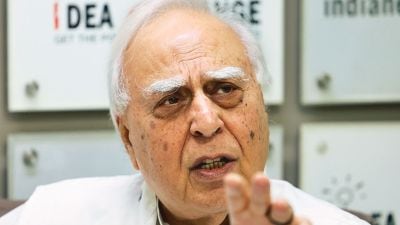India’s economy and your investments: flags to watch in 2022
How the pandemic pans out in its third year will determine the pace and nature of the recovery. Investments across asset classes will depend on factors such as inflation, interest rate movements, credit growth, foreign portfolio investments, and the price of crude oil.
 The stimulus programmes announced by governments to support national economies in 2020 and 2021 have led to the problem of inflation.
The stimulus programmes announced by governments to support national economies in 2020 and 2021 have led to the problem of inflation. The Omicron-led surge in Covid-19 cases around the world has poured cold water on the hopes of rapid economic recovery, and dampened investor sentiment. Gates of workplaces and businesses that had opened in anticipation of a return to normalcy are being slammed shut again as partial lockdowns of varying intensity begin to be re-imposed.
How the pandemic pans out in its third year will determine the pace and nature of the recovery. Investments across asset classes will depend on factors such as inflation, interest rate movements, credit growth, foreign portfolio investments, and the price of crude oil. Employment generation, and a certainty of steady income for those at the bottom of the pyramid who were hit by the economic disruptions of the first and second waves, will be key to long-term sustainable growth for India.
Omicron concern
There is cautious optimism that the new variant, which is highly transmissible but not necessarily equally deadly, will not trigger a wave of serious illness that will overwhelm hospitals and fill cremation grounds in the way Delta did in April-May. Some experts have argued that the emergence of Omicron in fact signals the “beginning of the end” of the pandemic, and the virus may be entering the endemic stage.
It is hoped that lockdowns will remain relatively soft and there will be limited disruption in economic activity; however, there is also concern that exponentially rising case numbers may hurt consumption and the revival of corporate earnings.
“Now that Covid is a known unknown, it may not hit economic activity, C J George, MD, Geojit Financial Services, said. “The bigger concern is over the way inflation and interest rates will move in 2022, and the impact they will have on debt and equity markets.”
Interest rates
 The stimulus programmes announced by governments to support national economies in 2020 and 2021 have led to the problem of inflation. While inflation in India is still in a comfortable zone, it has touched a four-decade high in the United States. The Federal Reserve decided to increase the pace of reducing monthly asset purchases; it is also likely to hike rates twice, possibly thrice, in 2022.
The stimulus programmes announced by governments to support national economies in 2020 and 2021 have led to the problem of inflation. While inflation in India is still in a comfortable zone, it has touched a four-decade high in the United States. The Federal Reserve decided to increase the pace of reducing monthly asset purchases; it is also likely to hike rates twice, possibly thrice, in 2022.
Market participants say the pace of withdrawal of stimulus and hike in interest rates may disrupt equity and debt markets going forward. As the Fed started tapering, foreign portfolio investments (FPIs) have been pulling out — they have pulled out over Rs 40,000 crore from Indian equities since November 22, putting pressure on the benchmark indices.
However, domestic institutional investors (DIIs) have been buying — and have invested a net of over Rs 48,900 crore during the same period.
If equity markets are impacted by FPI outflows, a hike in interest rates in India may reduce the pace of money deployment by retail investors in domestic equities, and see some reallocation from equity to debt.
Equities outlook
Some market experts feel that while interest rates may go up in 2022, inflation will not be much of a worry in India. There is expectation that equities may do well if Omicron does not cause a major disruption, and domestic retail flow into equities remains stronger than FPI outflows.
“Investors will have to moderate their expectations of returns from equities in 2022. It is a fair value market. If Omicron does not cause big disruption, domestic retail inflows remain stronger than FPI outflows, and corporate earnings remain strong, then it will outperform other asset classes,” Nilesh Shah, MD, Kotak Mahindra AMC, said.
George of Geojit pointed out that while interest rate hikes in developed markets will put some pressure on domestic equities as FPIs will pull out money, even domestic rate hikes will see a decline in money flows into equities from retail investors.
Debt market
Yields on government securities have started hardening, rising from the recent low of 6.1 per cent on September 22 to 6.4 per cent on Thursday. While the RBI has deviated from central banks in developed countries and argued for the need to maintain an accommodative stance, the market is pushing interest rates higher in anticipation of the rising cost of capital. The largest state-owned lender, State Bank of India, increased the base rate by 10 basis points to 7.55 per cent per annum earlier this month — an indication that the era of low rates may be over.
Movements in yields, which depend on trends in interest rates, can result in capital gains or losses for investors. If an individual holds a bond carrying a yield of 6%, a rise in bond yields in the market will bring the price of the bond down. On the other hand, a drop in bond yield below 6% will benefit the investor as the price of the bond will rise, generating capital gains. Investors in fixed deposits can opt to keep the tenure lower in order to capture higher rates going forward.
Rising yields also have implications for home loans. Floating rates may rise, as banks try to pass on any increase in costs to customers.
Gold has corrected from the peak of around $2,120 per ounce in August 2020 to around $1,800. Gold is expected to stay positive going ahead, and gain momentum in case it closes above $1,850 on expectations of rising interest rates and inflation.
Geopolitics potential
As the confrontation between China and the West escalates, India could be a beneficiary of foreign direct investments from the US and Europe, market experts feel.
International manufacturing firms have started to look towards India as they seek to diversify production away from China, and several private equity investors and venture capital funds have increased their investments in India.
However, India will have to work hard on requirements of policy, skill development, and regulation, in order to attract these investments.
Former chief economic advisor Arvind Subramanian wrote in a recent article in Foreign Affairs magazine that while “India has made impressive recent progress in building the ‘hardware’ of economic success… the country continues to struggle to fix its ‘software’, the crucial economic framework under which domestic entrepreneurs and foreign firms must operate”.
“Policies are changed abruptly; rules are altered to favour certain firms. As a result, domestic entrepreneurs and foreign companies have been reluctant to undertake the investments needed to exploit India’s rapidly advancing hardware,” Subramanian wrote.




- 01
- 02
- 03
- 04
- 05



































